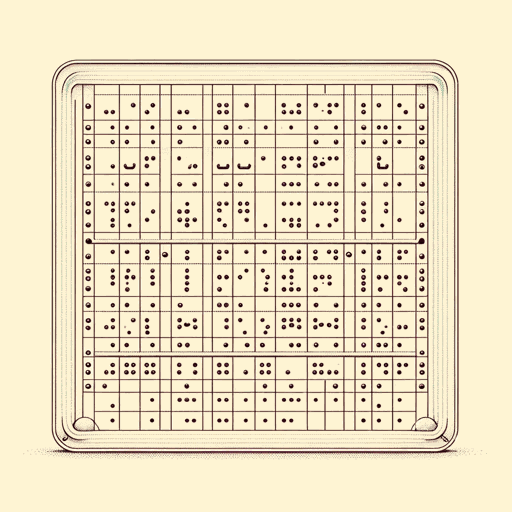26 pages • 52 minutes read
Russell FreedmanOut of Darkness: The Story of Louis Braille
Nonfiction | Biography | Middle Grade | Published in 1997A modern alternative to SparkNotes and CliffsNotes, SuperSummary offers high-quality Study Guides with detailed chapter summaries and analysis of major themes, characters, and more.
Summary and Study Guide
Overview
Out of Darkness: The Story of Louis Braille, by Russell Freedman, is a biography of Louis Braille (1809-1852), innovator of the eponymous braille alphabet for reading and writing for blind individuals. Russell Freedman was a renowned journalist and nonfiction author. He specialized in biographies of inspirational individuals, usually writing for an audience of children and young adults. He received the Laura Ingalls Wilder Award, renamed the Children's Literature Legacy Award, which recognizes writers who have made substantial contributions to children’s literature. This guide refers to the 1997 Clarion Books edition.
Content Warning: The source material uses an outdated, offensive term for people with intellectual disabilities, which is replicated in this guide only through a direct quote.
Summary
Louis Braille was born in the small French town of Coupvray in 1809. At three years old, young Braille accidentally struck himself in the eye with one of his father’s tools (his father was a harness and saddle maker). His eye became infected, and the infection soon spread to his other eye, leaving Braille completely blind before he turned four.
Braille’s father fashioned him a cane, and Braille soon learned his way around his home and the village. Braille took lessons with the village priest, who recommended that the bright young boy attend school. Braille was an attentive and vivacious student, but was excluded from much of the lesson content, which relied heavily on reading and writing.
At 10 years old, Braille received a scholarship to attend the Royal Institute for Blind Youth in Paris. Here, Braille learned to play the piano, as well as how to read using “embossing,” which required tracing raised letters with a finger. This was a slow and frustrating way of reading; Braille became determined to develop a more intuitive way for blind people to read, and also to enable blind people to write.
A military captain, Charles Barbier, visited the institute to share a method of communication which he had developed for military purposes, which he called nightwriting. Nightwriting involved punching simple codes onto cards; these were interpreted by tracing the outlines with a finger. This system allowed communication of simple orders in the dark, and Barbier—feeling that it might be useful for blind individuals—extended the system.
Barbier’s system, called sonography, used dots and dashes to signify different sounds, which could be combined to create phrases and sentences. Braille was excited, but he felt that it was onerous to read and write and wanted to improve it. Barbier was insulted and reluctant to change his system, so Braille began experimenting in private with simpler systems of dots and dashes. Around this time, Valentin Hauy, the institution’s founder, visited. Braille was inspired by his stories from his lifetime of advocacy for the blind.
Braille had a breakthrough when he decided to design patterns of dots to signify letters of the alphabet, rather than sounds. This allowed the creation of a simple raised-dot alphabet, which could be easily learned. The director of the institute, Professor Pignier, was shocked and impressed. He encouraged Braille to teach the staff and students his new method for reading and writing.
Pierre-Armand Dufau, a more conservative director, replaced him and banned the use of braille. Braille, now a teacher at the Institute, had to publicly comply. Eventually, Dufau allowed braille to be used. The use of braille was presented to the public at the opening of a new school building; people were shocked and impressed by the blind students’ ability to rapidly write and read braille. Eventually, braille spread to other schools and institutions across Paris and internationally.
Braille died at the age of 43 from tuberculosis. He used his own meager income to pay for the production of writing materials and braille resources. He did not become famous or rich during his lifetime, but he is now celebrated for changing the lives of blind individuals around the world.
Related Titles
By Russell Freedman

Freedom Walkers
Russell Freedman

Lincoln: A Photobiography
Russell Freedman

The Life and Death of Crazy Horse
Russell Freedman

The War to End All Wars: World War I
Russell Freedman

The Wright Brothers: How They Invented the Airplane
Russell Freedman

